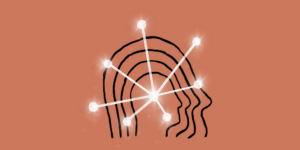In recent years, the field of computer vision has witnessed a remarkable transformation with the introduction of Convolutional Neural Networks (CNNs). These deep learning models have revolutionised image recognition, object detection, and numerous other visual tasks. From self-driving cars to medical imaging, CNNs have become an indispensable tool in analysing and understanding visual data. In this article, we delve into the fundamentals of Convolutional Neural Networks, their architecture, and their impact on the world of computer vision.
What are Convolutional Neural Networks?
Convolutional Neural Networks, also known as ConvNets or CNNs, are a specialised type of deep learning models designed to process and analyse visual data. They are inspired by the biological visual cortex’s structure and function in the human brain. CNNs excel at learning hierarchical representations of images, capturing local patterns and global structures simultaneously.
Architecture of CNNs:
The architecture of a typical Convolutional Neural Network comprises three main types of layers: convolutional layers, pooling layers, and fully connected layers.
Convolutional Layers: These layers are responsible for extracting local features from the input image. Convolutional filters, also called kernels, are applied to the image, performing element-wise multiplication and aggregation to produce feature maps. Multiple filters can be used to capture various image features, such as edges, textures, and shapes.
Pooling Layers: Pooling layers reduce the spatial dimensions of the feature maps, while retaining the essential information. Max pooling is the most commonly used technique, where the maximum value within a local region is selected and pooled. This helps in achieving translation invariance and reducing computational complexity.
Fully Connected Layers: These layers are conventional neural network layers where each neuron is connected to every neuron in the previous layer. They capture high-level features by learning complex relationships among the extracted features from earlier layers. The fully connected layers ultimately provide the output predictions or classifications.
Training CNNs:
Training a Convolutional Neural Network involves a process known as backpropagation, where the network learns the optimal weights and biases that minimise the difference between predicted and actual outputs. This is achieved by utilising labeled training data and adjusting the network’s parameters through gradient descent optimisation algorithms, such as stochastic gradient descent (SGD) or Adam.
Applications of CNNs:
Convolutional Neural Networks have revolutionised several domains through their exceptional ability to understand visual data. Some of the notable applications include:
Image Classification: CNNs have achieved unprecedented accuracy in image classification tasks, surpassing human performance in some cases. They have been used to classify objects, animals, and scenes with remarkable precision.
Object Detection: CNNs can localize and identify multiple objects within an image, making them crucial for tasks like autonomous driving, surveillance, and augmented reality applications.
Facial Recognition: CNNs are extensively employed in facial recognition systems, enabling reliable identification and verification in various fields, including security, personal devices, and social media
Medical Imaging: CNNs have proven invaluable in medical image analysis, aiding in the diagnosis of diseases, such as cancer, by accurately segmenting tumors, identifying anomalies, and assisting radiologists in their decision-making processes.
Video Analysis: CNNs are used to analyze video sequences, enabling action recognition, video captioning, and video surveillance applications.
Convolutional Neural Networks have revolutionized computer vision, enabling unprecedented progress in image analysis and recognition tasks. With their hierarchical architecture, CNNs can learn intricate features from visual data, making them capable of performing complex tasks that were previously challenging or impossible. As CNNs continue to evolve, their impact will extend to even more domains, transforming how we perceive and interact with the visual world.






![Read more about the article [Funding roundup] Vanity Wagon, Sarathi Healthcare, and Orb Energy raise early-stage deals](https://blog.digitalsevaa.com/wp-content/uploads/2022/04/funding-YS-1649001014853-300x150.png)



